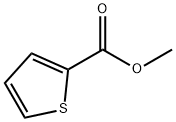Oxandrolone , 98% , 53-39-4
Synonym(s):
17β-Hydroxy-17α-methyl-2-oxa-5α-androstan-3-one;Oxandren;Provitar;Vasorome
CAS NO.:53-39-4
Empirical Formula: C19H30O3
Molecular Weight: 306.44
MDL number: MFCD00198944
EINECS: 200-172-9
PRODUCT Properties
| Melting point: | 235-238°C |
| alpha | D25 -23° (c = approx 1% in chloroform) |
| Boiling point: | 387.04°C (rough estimate) |
| Density | 1.0829 (rough estimate) |
| refractive index | 1.4200 (estimate) |
| storage temp. | 2-8°C |
| solubility | DMSO: soluble2mg/mL (clear solution; warmed) |
| form | powder |
| pka | 15.15±0.60(Predicted) |
| color | white to beige |
| optical activity | [α]/D -19 to -26°, c = 1 (CDCl3) |
| Merck | 6921 |
| InChIKey | QSLJIVKCVHQPLV-PEMPUTJUSA-N |
| CAS DataBase Reference | 53-39-4(CAS DataBase Reference) |
| NIST Chemistry Reference | Oxandrolone(53-39-4) |
Description and Uses
Oxandrolone is a synthetic anabolic-androgenic steroid. It is a 17 alpha-methylated version of dihydrotestosterone (DHT). It can be used for the treatment of many kinds of disorders such as idiopathic short stature, body mass loss due to catabolic illness, severe burns, trauma and hereditary angioedema as well as turner syndrome. Oxandrolone is especially effective in the treatment of severe burns without causing obvious side effects. It acts as an agonist of the androgen receptor, which modulates related gene expression to increase protein synthesis, further boosting muscle growth and increasing body mass as well as bone mineral density. However, it should be noted that its androgenic effect is less than its anabolic effect.
androgenic anabolic steroid;reverses catabolic tissue processes; promotes buildup of protein; increases erythropoietin production
Safety
| Symbol(GHS) |  GHS08 |
| Signal word | Danger |
| Hazard statements | H351-H360FD |
| Precautionary statements | P201-P308+P313 |
| Hazard Codes | T |
| Risk Statements | 60-63-20/21/22 |
| Safety Statements | 22-36/37/39-45 |
| WGK Germany | 3 |
| RTECS | RN6800700 |
| HS Code | 2937290000 |
| Hazardous Substances Data | 53-39-4(Hazardous Substances Data) |
| Toxicity | LD50 oral in rabbit: > 5gm/kg |




